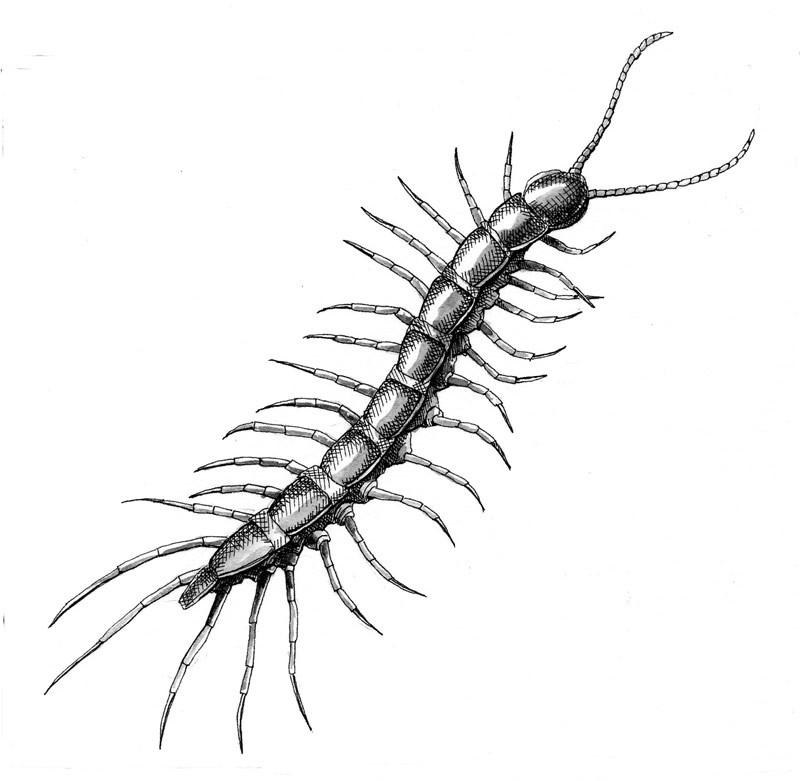
When a tree nears the end of its life span, woodpeckers may arrive to puncture holes in its trunk. Rainwater running into the openings can carry bacterial and fungal spores that attack cellulose and lignin, and rotting is likely to begin and spread into the heartwood. Carpenter ants, longhorn beetles and carpenter moth larvae bore into the wood. Bark beetles shoulder their way under the loosening bark, followed by flat centipedes, crustacean woodlice, wood roaches and tiny mites.
The arrival of such creatures is a sign of a troubled tree, one still standing but probably not for long.
Eventually the old tree surrenders its hold on life, topples over and lies partly hidden in forest undergrowth. The rotting process that helped fell the tree accelerates after the trunk is on the ground. Woody tissues become softened by capillary water drawn from the soil. More small creatures enter the decaying wood. Labyrinthine galleries are excavated and widened under the bark as one population of organisms after another becomes established, each flourishing before being replaced by successors.
In death the fallen tree takes on a complex new role, as it offers shelter, sustenance and protected nurseries for myriad creatures and plants. During a visit to one, I lifted sheets of bark and teased apart wood fibers to find millipedes, slugs, snails, bessybugs and rove beetles. Using a magnifier, I found springtails and pseudoscorpions. Exposed under flaking bark were shiny, yellow slime molds.
Meanwhile, the deteriorating log becomes a focal point for larger visitors: chipmunks, maybe a porcupine, occasionally a grouse. Squirrels may arrive to dismember pinecones atop the trunk, and a gray fox might use the log’s unobstructed crest to watch for prey in surrounding vegetation. A black bear arrives to rip off loose bark in a search for succulent grubs.
The smaller organisms of varying species and numbers keep coming. They distribute themselves throughout the log according to the wood’s exposure to light and air and its degree of rot and dampness. While many insects and those slime molds avoid light, many plants require it. Green algae take advantage of sunlight where bark has peeled away; mosses and liverworts appear later, and lichens begin their slow growth.
Using magnification, I have observed a host of tiny animals living in “wood-water” that I extracted by squeezing wet, pulpy wood with an old potato masher. I obtained turbid drops harboring a multitude of swirling and jittering microorganisms, among them: spinning rotifers and slow-moving water bears, one-celled flagellates, ciliates and amoebas.
Pioneer microbes create a thin substrate to which larger organisms take hold. The same species may not appear together again until another log falls with populations of organisms following the same general pattern of succession.
A visitor to the woods who inspects a fallen tree gets a glimpse of a special world. A rotting log can be viewed as a microcosm of the larger world—a classic integrated system of organisms and environment with familiar ecological forces on display in a chronological order. Almost every form of life appears: the decomposers, animal scavengers and predators; primary producers such as photosynthetic algae; plant-eating herbivores, parasites and commensals. They all live together in special relationships.
In time, certain parts of a log become almost indistinguishable from forest litter. Some parts bulge with mounds of moss that support clusters of ferns growing like green islands above the forest floor. Along the fallen giant’s length a birch sapling may start growing, its roots reaching around the softened trunk seeking anchorage in the soil below.
Like galaxies scattered throughout the cosmos, each log is an unknown entity. One never knows exactly what associations will develop, what specific conditions will be encountered, or what startling creatures and plants will appear when the log is turned or opened. Each decaying log becomes a world unto itself.

